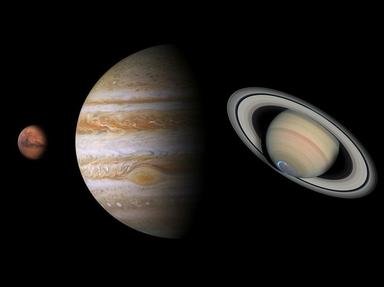Quiz Answer Key and Fun Facts
1. Beginning at the high end of the spectrum, this object, a large satellite of Saturn, has one of the highest known surface brightnesses of any object in the Solar System. Which is it?
2. Which of these objects is known to be capable of drastically changing in surface brightness over the course of its orbit?
3. This satellite of Saturn is known for having one side which is relatively dark while its other side is nearly all white. Which is it?
4. Evidence supports that C-type asteroids typically have the darkest surfaces of any asteroid classification.
5. If one were to view this object from space, it could be thought that this object is fairly bright. However, its surface is nearly slate-black. Which object matches this description?
6. Which of these objects does not fit the description of an object with an exceptionally reflective surface?
7. The surface of which of these objects, given the nickname "Biden", is speculated to be primarily pink in colour?
8. An anomaly of an object: one may view this one day and find it to be fairly neutral in reflectivity, but then they may view it again the next day and find that the exact same area is suddenly much more reflective! Which object could this describe?
9. Which object in the asteroid belt has several mysterious bright spots on its otherwise spectrally neutral surface?
10. Which natural satellite of Pluto was thought to be fairly bright upon its discovery, but it was later proven to be almost as dark as charcoal?
Source: Author
jonthomas
This quiz was reviewed by FunTrivia editor
rossian before going online.
Any errors found in FunTrivia content are routinely corrected through our feedback system.
